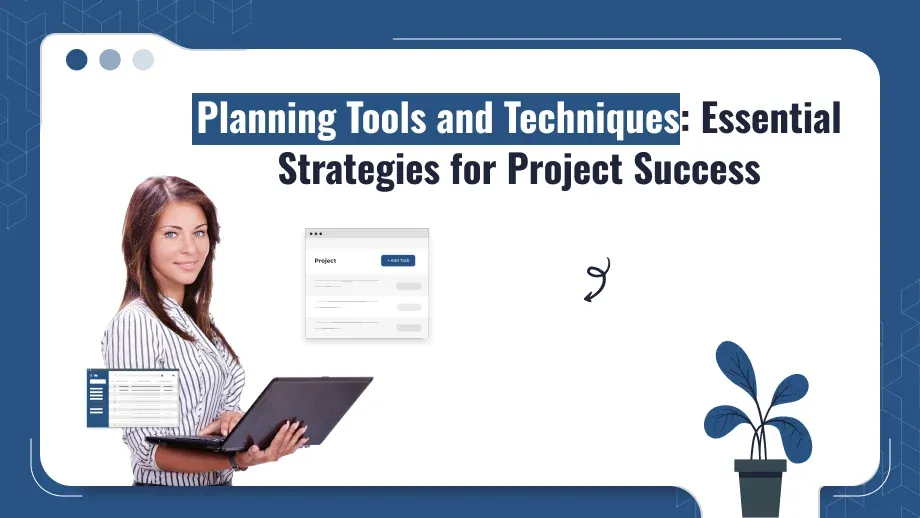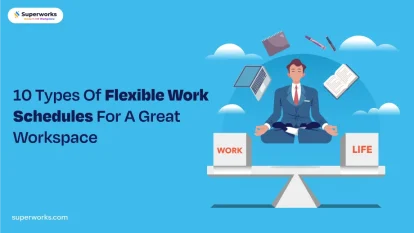
In the fast-paced world of project management, compelling arranging is pivotal for victory. Whether you’re overseeing a little group or a huge organization, having the right project planning methods and procedures can essentially impact the result of your projects. This article investigates different methods of planning and strategies that venture directors can use to streamline forms, improve collaboration, and guarantee fruitful project delivery.
Understanding Planning Tools and Techniques
Planning techniques and tools are crucial components of project management, making a difference experts explore the complexities of overseeing errands, assets, and timelines. Whereas these terms are frequently utilized traded, they allude to unmistakable concepts:
- Planning Tools: These are unmistakable resources – often program or templates – that help in overseeing different viewpoints of a extend. They include Gantt charts, Kanban boards, and project management software like Superworks.
- Planning Techniques: These allude to techniques and forms that direct how a project is arranged and executed. Methods incorporate the Basic Way Strategy (CPM), Spry arranging, and Work Breakdown Structure (WBS).
Understanding the contrasts between project planning techniques and apparatuses is basic for viable project management, as they complement each other in accomplishing project objectives.
Importance of Project Planning in Project Management
Effective project planning is the spine of effective project management. It gives a clear guide for project execution and makes a difference in foreseeing potential challenges. Here are a few reasons why arranging is critical:
- Clarity and Direction: A well-defined arrange traces the project’s objectives, scope, and deliverables, giving clarity for all partners involved.
- Resource Management: Appropriate arranging guarantees that assets are designated productively, making a difference to anticipate bottlenecks and maximizing productivity.
- Risk Mitigation: Expecting potential dangers and creating moderation procedures amid the arranging stage can essentially decrease the affect of unanticipated issues.
- Improved Communication: A clear project arrange improves communication among group individuals and partners, guaranteeing everybody is adjusted on targets and expectations.
- Measurable Success: Setting particular, quantifiable objectives permits project directors to track advance and assess the project’s victory against predefined criteria.
Top Planning Tools and Techniques
1. Gantt Charts
Gantt charts are one of the most broadly utilized project management tools. They give a visual timeline for project tasks, making a difference project managers plan, plan, and track progress.
- Benefits: Gantt charts offer a clear diagram of assignment terms, conditions, and points of reference, making it simpler to oversee project timelines effectively.
- Use Cases: Perfect for projects of any measure, Gantt charts can be utilized over different businesses to visualize project plans and oversee resources.
2. Work Breakdown Structure (WBS)
A Work Breakdown Structure (WBS) is a progressive organization of project responsibilities. It breaks down huge projects into littler, more reasonable components, making it less demanding to organize work and track advance.
- Benefits: WBS upgrades project clarity by visualizing the connections between assignments and deliverables. It makes a difference groups center on person components whereas keeping up an diagram of the whole project.
- Use Cases: WBS is commonly utilized in conjunction with planning tools and techniques like CPM and Perky to move forward assignment administration and accountability.
Optimize Your Projects – Master Essential Planning Tools and Techniques!
Leverage effective strategies to streamline your project management process and ensure successful outcomes from the start.
3. Project Roadmaps
Project roadmaps give a high-level diagram of project objectives, timelines, and key turning points. They adjust groups and partners on the project’s vision and direction.
- Benefits: Roadmaps encourage vital arranging by outlining how different project stages adjust with organizational targets.They help stakeholders understand the project’s trajectory.
- Use Cases: Roadmaps are particularly valuable for long-term projects that require arrangement over different groups and departments.
4. Task Lists
Task records are basic however successful apparatuses for overseeing project activities. They offer assistance groups track person assignments, due dates, and progress.
- Benefits: Assignment records improve responsibility by clearly characterizing who is dependable for each assignment and when it is due. They are simple to make and manage.
- Use Cases: Valuable for both person errands and collaborative projects, errand records can be adjusted to different project management styles.
5. Kanban Boards
Kanban boards are a visual assignment administration apparatus that permits groups to visualize workflows. They comprise of columns speaking to diverse stages of a project, with cards speaking to tasks.
- Benefits: Kanban sheets make strides collaboration and straightforwardness, making a difference groups distinguish bottlenecks and prioritize assignments effectively.
- Use Cases: Commonly utilized in Dexterous techniques, Kanban sheets can be connected over different businesses to improve workflow administration.
Essential Planning Techniques
1. Critical Path Method (CPM)
The Basic Way Strategy (CPM) is a project management technique utilized to distinguish basic assignments that decide the project’s term. By analyzing assignment conditions, project managers can prioritize basic assignments to guarantee opportune project completion.
- Benefits: CPM makes a difference project supervisors designate assets successfully, guaranteeing that the most basic errands get the vital attention.
- Use Cases: Perfect for complex project with different forbid errands, CPM is a profitable method for optimizing project schedules.
2. Program Evaluation and Review Technique (PERT)
Saucy is a real instrument utilized in project management to analyze and talk to the assignments included in completing a project. It centers on the connections between assignments and makes a difference gauge the time required to total each task.
- Benefits: Saucy is especially valuable for project with dubious lengths, as it permits project directors to visualize conditions and survey potential timeframes.
- Use Cases: Perky is commonly utilized in investigate and improvement project where timelines may be unpredictable.
3. Agile Planning
Agile planning emphasises adaptability and flexibility in project management. It includes iterative advance through brief cycles called sprints, permitting groups to react rapidly to changes.
- Benefits: Dexterous arranging improves collaboration and cultivates a culture of ceaseless change, empowering groups to convey esteem incrementally.
- Use Cases: Dexterous is broadly utilized in computer program improvement but can be connected to different businesses that require flexibility and fast reaction to change.
4. Scenario Planning
Scenario planning includes creating and analyzing distinctive potential future scenarios to superior plan for vulnerabilities. This method makes project managers recognize dangers and opportunities.
- Benefits: By considering different scenarios, groups can create possibility plans that improve their capacity to react to startling challenges.
- Use Cases: Situation arranging is useful in key projects where vulnerabilities can essentially affect results.
Benefits from Using Planning Tools and Techniques
Using effective planning tools and techniques has several benefits, such as:
- Keep tasks sorted and organized: This reduces confusion, and helps you to manage your project better.
- Superior Communication: A clear arrange encourages communication between group individuals and other partners. This guarantees that everybody is on the same page.
- Improved Risk Management: By distinguishing and evaluating the dangers in progress, groups can moderate issues proactively.
- High Project Success Rates: Planning tools and techniques that are effective will increase the likelihood of completing projects on schedule and within budget.
Challenges in Implementing Planning Tools and Techniques
Although planning tools and techniques offer many benefits, they can also present challenges, including:
- Group resistance to alter: A few groups may not be willing to adjust to modern forms and devices, coming about in conflicting project management.
- Training and Familiarization: Ensuring that team members are properly taught to use tools might take additional time and resources.
- Balance Complexity with Usability: Some tools can be too complex to use for a team, leading them into confusion.
Conclusion
Effective planning tools and techniques are crucial to successful project management. Project managers can implement strategies that will streamline processes and improve project outcomes by understanding the difference between tools and methods. Gantt charts, Critical Path Method and other techniques used for scheduling project activities play an important role in the process. Freelance Project Manager will also find that mastering the tools they use is crucial to effectively manage multiple clients and projects. These tools are essential for teams as the project management landscape continues to change.






